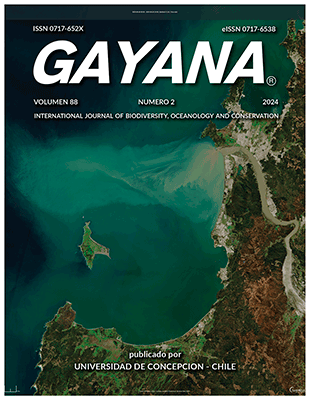Abstract
To identify patterns in the conformation of sandy beach communities in the Gulf of Arauco and determine the physical factors that explain it, between October 2021 and August 2022, three sampling surveys were carried out to evaluate the abundance, richness and community structure in 19 sites. Each site was characterized based on six physical attributes including sediment dynamics, beach type, grain size, shoreline exposure, distance to industrial centers, and distance to the mouth of the Biobío river. The results obtained revealed the presence of seven species, among which Emerita analoga and Excirolana hirsuticauda were dominant. E. analoga showed dominance in the October 2021 survey, particularly between Coronel and Arauco, while E. hirsuticauda was dominant in January 2022 and August 2022. In general, the communities showed a pattern characterized by a change in community structure in the middle zone of the Gulf of Arauco, near Lota, with greater species richness and diversity towards the southern section of the gulf and predominance of E. analoga and Orchestoidea tuberculata towards the north. The factors that explained this spatial differentiation were associated with sedimentary dynamics, beach type and granulometry. The proximity to industrial centers, the mouth of the Biobío river and the exposure of the coastline were significant, although they did not show the same statistical significance as the physical variables that characterize the type of beach.

This work is licensed under a Creative Commons Attribution-NonCommercial 4.0 International License.
Copyright (c) 2024 Aldo Hernández, José Miguel Bogdanovich, Oscar Inostroza-Michael, Carlos Leal Gonz´ález, Eduardo Hernández-Miranda, Rodrigo Veas, Marco Salamanca, Cristian Chandía

